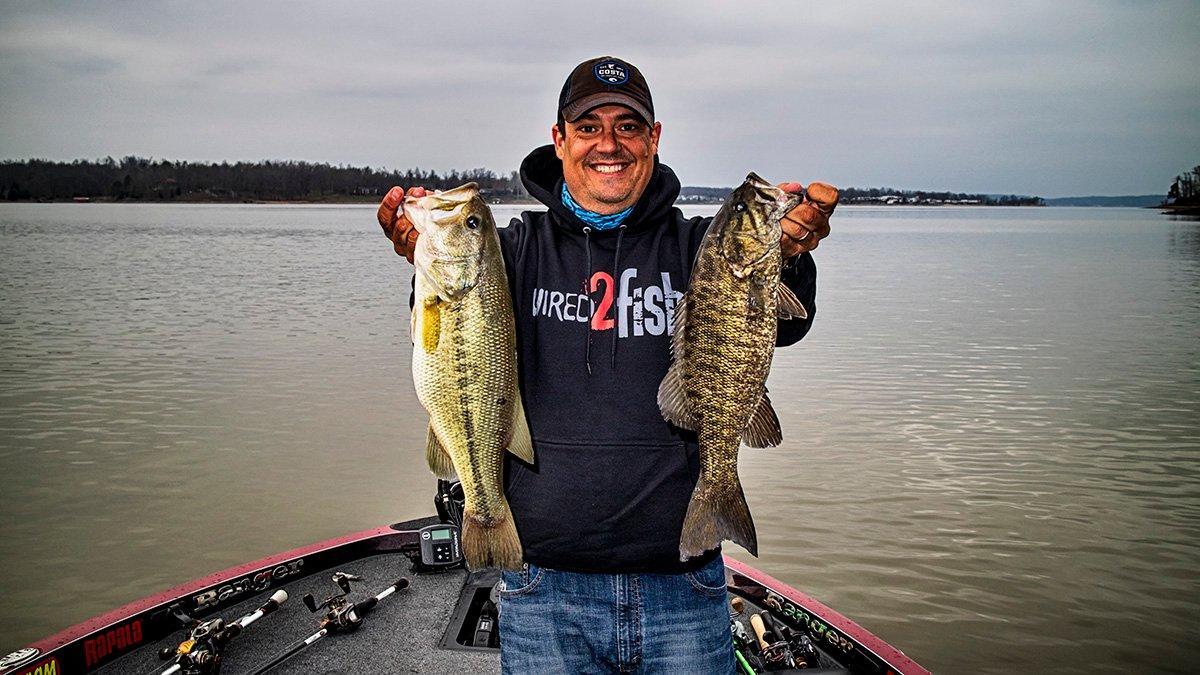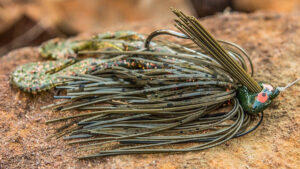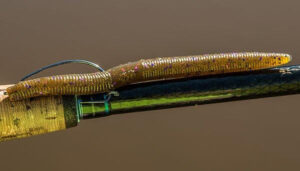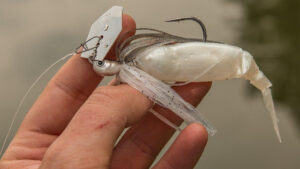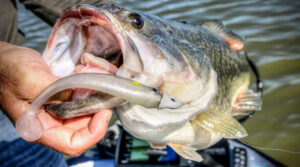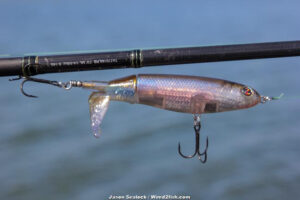My nephew sent me a message this week and asked, “Uncle J, what lures should I use for bass fishing. I really don’t know where to start.”
Surprisingly we get asked that same question a lot regardless of fishing experience. Whether it’s anglers coming to the lakes we live on and fish or just bumping into other fishermen in public, they all want to know what we throw on a given body of water or what our favorite lure is to fish for bass.
I travel and fish all over the country, and now that I ponder my nephew’s question, it seems that no matter where I go, I tend to reach for the same handful of lures to probe new water with confidence. In fact I recently had to pack for a trip and now that I think back on what I packed for that trip, all 5 of these lures were in there. Sure I will throw the whole tackle box at them at times. And still at other times, I have one bait that I’m going to pick up and throw all day because experience on a certain body of water at that time of year has showed me it works.
But when I go to new waters where I need to see what’s going on with the bottom, the water clarity, the mood of the fish, and not knowing much about the forage, it seems I always narrow down my selection to just this handful of baits:
- Jig
- Texas Rigged Plastic
- Chatterbait
- Swimbait
- Topwater
Jig
If a fishery has crawfish, bluegill, or shad, fishing a jig is a good choice of lures to start with. You can crawl a jig slowly over rocks. You can swim a jig through grass. You can fish it in 6 inches of water or 60 feet of water. You can fish a jig vertically or horizontally. Not many lures can do all of those things as well. So it’s always a good choice.
If a lake has a lot of cover or vegetation and isn’t very deep, I will go with lighter 1/4 or 3/8 ounce skirted jigs. If the water is clear, I will go with more natural colors, and if it’s stained or muddy, I will choose dark colors with bright accents like black and blue or black and chartreuse. If the water is warmer, I will lift and drop a jig more and add a kicking trailer. If I think the fish are really active, I will swim it a lot more.
Texas-rigged plastic
While I think a jig can work 12 months out of the year, I do believe it can get supplanted in the spring and summer by Texas-rigged plastics. For me in the spring, that is often a weightless or slightly weighted Senko. Fishing a Senko is a dynamite way to get shallow, skittish, pressured fish or weary fish nearing the spawn to bite.
But a Texas-rigged worm, lizard, creature or bug bait can be equally effective for probing cover, and fishing a lure clean through likely bass holding spots like grass, laydown trees, docks, brush piles and more.
Chatterbait
The Chatterbait has proven to be an extremely versatile bass fishing lure for covering water. It fishes great around grass. It can be skipped under docks. You can fish it pretty fast or crawl it at a slow pace. But I’ve found that it works in dirty water and clear water equally well which can make it better than other lure choices.
Sometimes a spinnerbait or a crankbait lose their effectiveness if the water gets too clear or the fish get really pressured. It seems bass get conditioned to those lures faster for some reason. But a Chatterbait produces in cold water and warm water equally well and even on pressured fish in clear water. We’ve all seen how much success the new JackHammer Chatterbaits are having across the nation.
Paddle-tail Swimbait
A swimbait has replaced the jig in a lot of my fishing as being a versatile asset in shallow or deep water as well as around cover or in open water in all four seasons of the year. You can scale the size and depth easily by changing jigheads and paddle tail sizes. It does lose some of its effectiveness in dirty water. But I like it a lot in clear water. It’s a staple for me in the winter as much as it is in the summer. I’ve been fishing it more around things like deep brush piles and under and around docks. It has a lot of applications that we are still just learning.
It’s easy to fish. Just slide the tail on a jighead and cast it out and use a steady slow to medium retrieve to bring the lure back. A swimbait is very natural and versatile for covering water in a variety of conditions and seasons. There are a ton of great swimbait fishing options available to anglers now. I often start with a Zoom Swimmer and work up or down on size depending on how deep I’m fishing and the cover.
Topwater
While I won’t fish a topwater in the winter, it can really excel at finding fish in large areas in the spring, summer and fall. I can cover flats, fish through pockets, probe points and find fish that will not commit to other more subtle presentations.
I usually want the water to be at least in the high 50s to low 60s before reaching for a topwater and usually I want stained to clear water to fish it. So I won’t rank it quite as high in versatility as some of the other bass fishing lures I choose. It might be a buzzbait in the spring and a frog in the fall or a Whopper Plopper in all of the above. But a topwater is often on deck when probing new waters.
Those are the five lures I most often use when I’m getting started bass fishing on a new body of water. I seem to pack these lures no matter where I am headed and what types of water I tend to fish. Obviously things like a lipless crankbait or a Ned rig can be even more effective at times than any of these lures and we have so many offerings now to fit all the various scenarios we face in bass fishing. But still you need a starting place and it’s hard to go wrong with these five bass fishing lures.
I’d love to hear what your go-to lures are for bass fishing.


